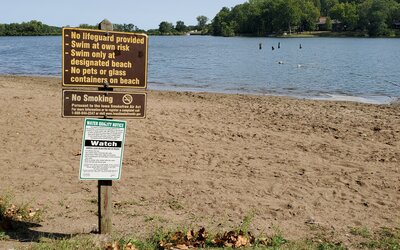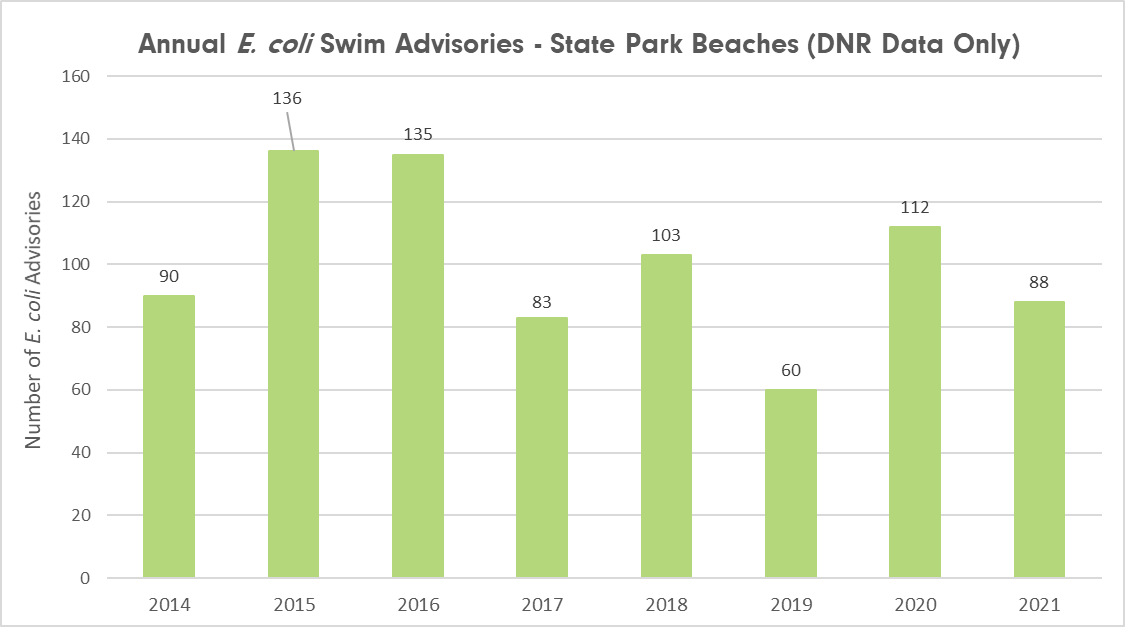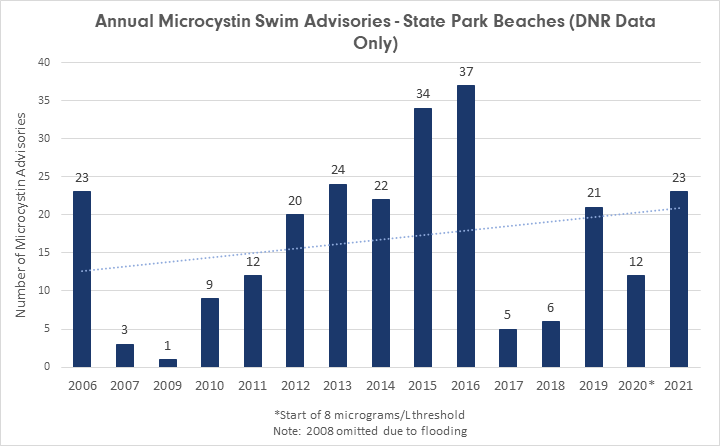Summer Ends but the Watch Continues
posted
on Friday, September 10, 2021
in
Water and Land News
 Last weekend was the unofficial end of the summer recreational season. The weather may still be warm, but the Iowa Department of Natural Resources’ (DNR) weekly beach monitoring ended last week, and the final advisories from the U.S. Army Corps of Engineers Rock Island District were released today. Thank you for following along with Weekly Water Watch this summer for water news and beach advisories. Before we turn our focus toward fall events and policy work, let’s recap what the summer delivered.
Last weekend was the unofficial end of the summer recreational season. The weather may still be warm, but the Iowa Department of Natural Resources’ (DNR) weekly beach monitoring ended last week, and the final advisories from the U.S. Army Corps of Engineers Rock Island District were released today. Thank you for following along with Weekly Water Watch this summer for water news and beach advisories. Before we turn our focus toward fall events and policy work, let’s recap what the summer delivered.
2021 Advisory Recap
This summer started with serious drought, bringing early toxic algae blooms and consistent levels of E. coli contamination. Over the course of the summer, the Iowa Department of Natural Resources (DNR) issued 23 beach advisories for microcystin and 88 for E. coli. The U.S. Army Corps of Engineers Rock Island District issued nine advisories for E. coli.

For the sixth year in a row, Backbone Beach had the most advisories for E. coli; it was under advisory for 11 of the 15 weeks of monitoring. Lake Darling had the most microcystin advisories this summer with seven. Combined with nine advisories for E. coli, Lake Darling was under a swim advisory for all but the first and last two weeks of the recreation season.

Notable Statistics from Summer 2021
- Crandall’s Beach (Spirit Lake), Rock Creek Lake, and Springbrook Beach in Guthrie County experienced their first advisories for microcystin since 2015.
- Backbone Beach was under advisory for E. coli for 11 of 15 weeks – the lowest number it has seen since 2014, but still more than any other state park beach. Since 2014, Backbone has experienced the most E. coli advisories at 105.
- Four beaches recorded advisories for both E. coli and microcystin.
- 24 beaches recorded swim advisories this summer. 20 beaches did not record an advisory.
The drought brought an increased number of microcystin advisories this summer – almost double the number in 2020. Stagnant water and high temperatures allowed blue-green algae to proliferate. This continued the increasing trend that we’ve documented over the years. Harmful algae blooms are not going away and continue to threaten public health and Iowans’ quality of life. That’s why we continue to fight for clean, safe water.
What's Next for Iowa Water News
Heading into fall, IEC is excited to announce that our Water Watch newsletter will continue. We're pivoting to a monthly edition called Iowa Water Watch. In addition to bringing you the latest water news and events, Iowa Water Watch will feature new voices and engaging content. We’ll keep you updated as we head into the 2022 legislative session and turn toward policy work that will protect our water and land.
Thank you for your support and happy reading!
- beach advisories
- clean water
- dnr
- harmful algal blooms
- microcystin
- public beaches
- toxic algae
- water quality
- water recreation